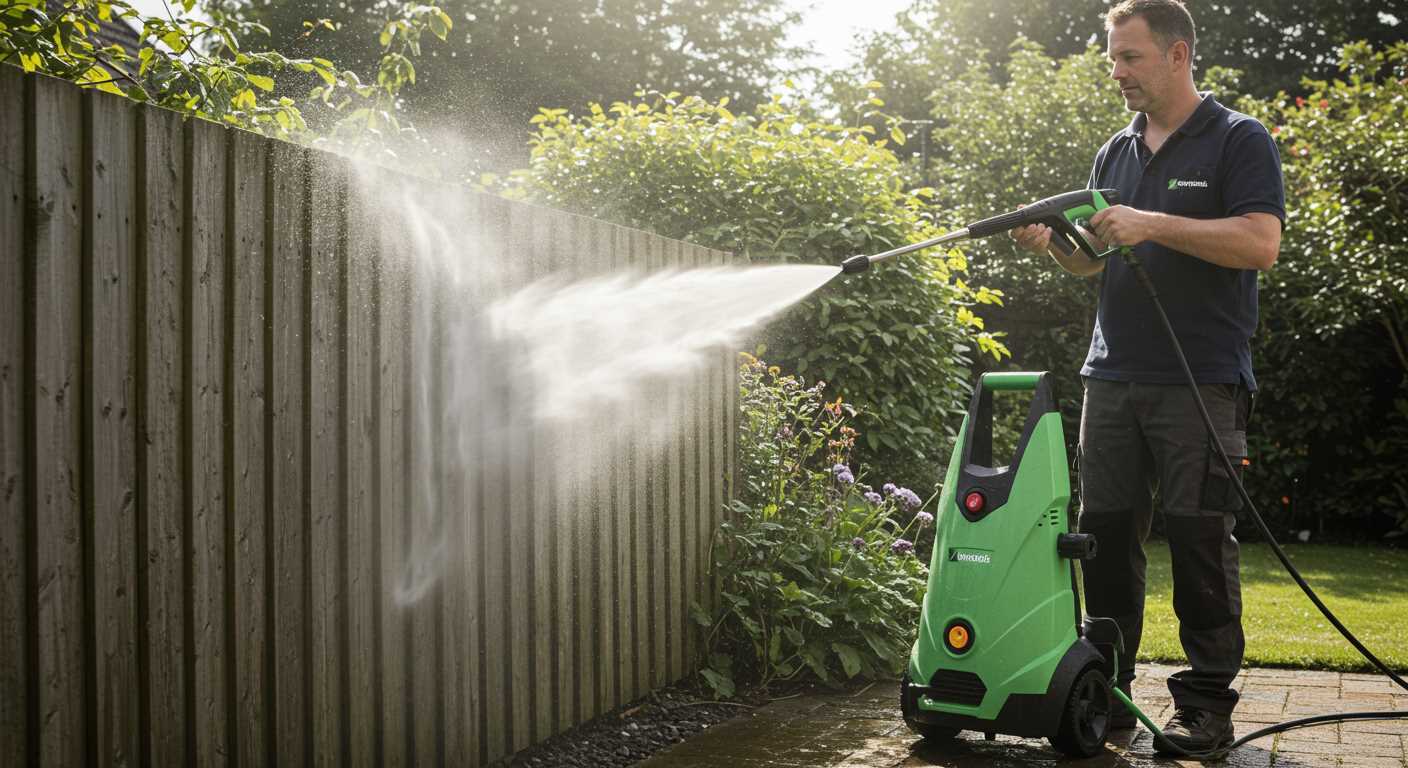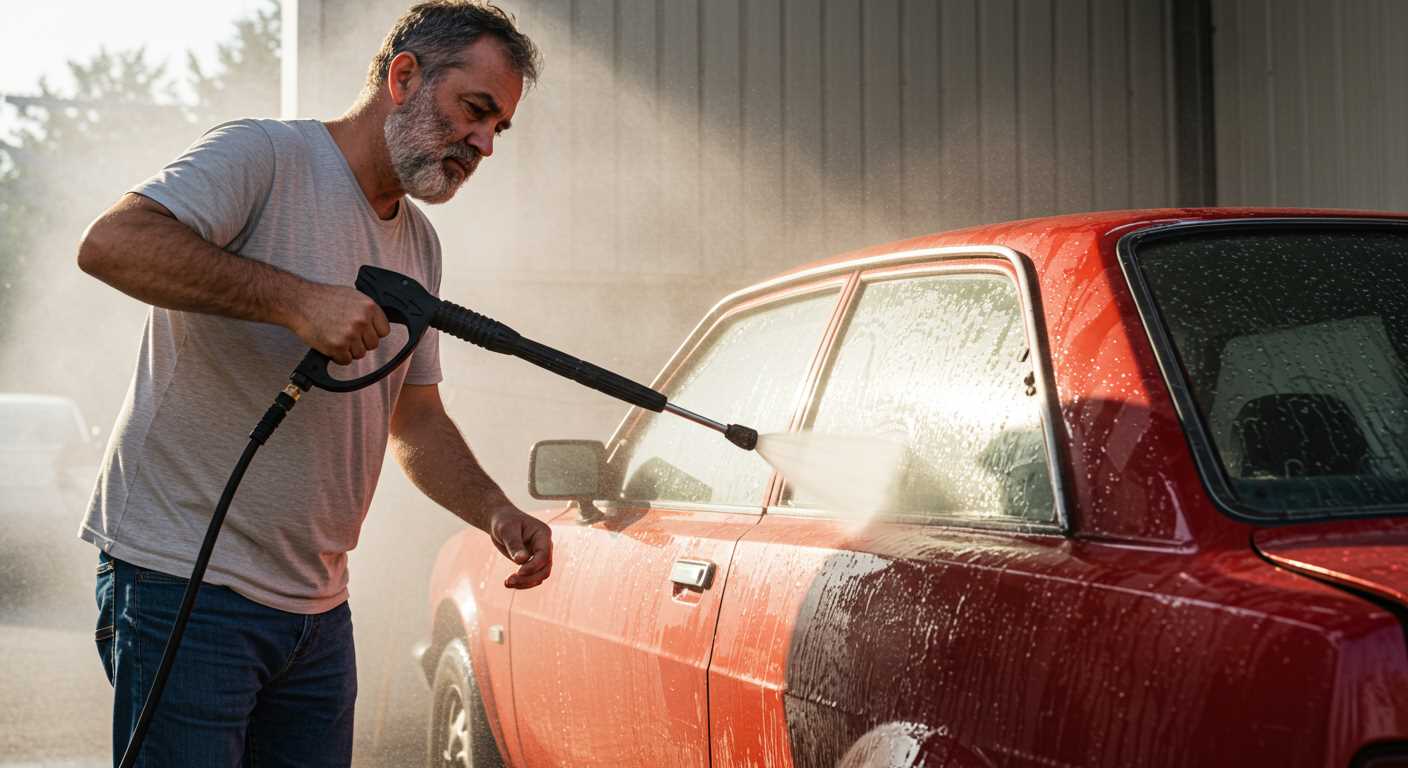

Before the temperature drops, I strongly recommend draining all the water from the unit to prevent freezing damage. Carefully disconnect hoses and remove the water from the pump, ensuring that no liquid remains inside. This simple step can save you from costly repairs later.
Next, pour antifreeze into the system designed specifically for pressure machinery. This will protect the internal components from harsh winter conditions. Make sure to follow the manufacturer’s instructions regarding the correct type and quantity of antifreeze, as using the wrong product could lead to further complications.
Additionally, check the oil level in the motor; if it’s low, top it up or change it entirely. Keeping the engine lubricated during the colder months is crucial to maintain its performance and longevity. Finally, store the machine in a dry, sheltered location to avoid exposure to harsh winter elements.
Steps for Preparing Your Cleaning Equipment for Colder Months
Ensure all liquid is removed from the system to prevent damage from freezing. This is the first step. Use a full tank of antifreeze suitable for your machinery to protect internal components.
- Begin by draining the water supply completely. Attach a garden hose and turn on the equipment to flush out any residual water.
- Once drained, use a pump-out method: activate the device briefly while holding the nozzle towards the ground. This will eliminate any trapped water.
- After ensuring the unit is dry, proceed to introduce antifreeze through the water inlet. You’ll need to run the motor for a short while to circulate it properly.
- Inspect the spray gun and wand for any debris or buildup. Clean these components thoroughly to maintain performance.
- Check the oil level and replace it if necessary. Fresh oil ensures the motor remains lubricated during inactivity.
- Store the machine in a dry, sheltered location, away from harsh conditions.
By following these guidelines, I’ve consistently ensured that my equipment remains in excellent shape, ready for action when the weather warms up again.
Drain and Flush the Pump System

Begin by disconnecting the water supply and ensuring the unit is powered off. Remove the garden hose and any accessories attached to the gun. Next, position the machine on a level surface to facilitate drainage.
Locate the pump’s drain plug–this is often situated at the bottom of the unit. Carefully unscrew the plug and allow any remaining water to drain out. This step is paramount to prevent freezing damage during colder months.
After the water has fully drained, flush the pump system. Fill a container with clean water and connect the garden hose to the intake. Turn the unit on briefly, allowing the water to flow through and wash out any impurities. Make sure to direct the spray into a suitable drainage area.
Once finished, turn off the machine and disconnect the hose. Reinstall the drain plug securely to prevent any moisture ingress. This ensures the pumping mechanism remains in good condition and is less susceptible to damage in freezing temperatures.
Remove and Store the Nozzle and Hose
Detach the nozzle from the lance by twisting it counterclockwise. Make sure it is completely free from any connection before moving on. Check the nozzle for any debris. If necessary, clean it with warm soapy water and a soft brush, then rinse thoroughly. Allow it to dry completely to prevent corrosion during storage.
Storing the Hose
Once the nozzle is set aside, move on to the hose. Begin by disconnecting it from the machine. Drain any remaining water by holding the hose upright and letting it flow out. Avoid crimping or stretching the hose during this process to maintain its integrity.
Coil the hose gently in a figure-eight pattern, ensuring not to create kinks. Store it in a cool, dry place, away from direct sunlight to avoid deterioration. A hose reel or storage bin works well for this purpose.
Final Checks
Before securing the storage area, double-check that both the nozzle and hose are completely dry. This helps prevent mildew and damage. It’s wise to label the storage box if you have multiple accessories, making future retrieval easier. Following these steps will help maintain these parts and extend their lifespan.
Add Pump Saver or Antifreeze to the System
Incorporating a pump saver or antifreeze into the water system significantly enhances protection against freezing temperatures. First, ensure that the equipment is completely drained and flushed as previously outlined.
Next, choose a suitable pump saver or non-toxic antifreeze. Read the manufacturer’s instructions to confirm compatibility with your device. Proceed with the following steps:
- Attach a suitable funnel to the pump inlet.
- Carefully pour the pump saver or antifreeze into the funnel. Aim for a steady flow to prevent spills.
- Once filled, allow the solution to circulate through the internal components by starting the motor briefly. This step ensures thorough coverage within the pump and critical areas.
- Shut down the equipment and disconnect the funnel.
Store the device in a dry, sheltered location to further safeguard it from harsh weather conditions. Regular inspections can help maintain its performance and prolong its lifespan.
Clean and Store the Air Filter
Remove the air filter from the unit by unscrewing or unclipping it, depending on the design. Inspect the filter for dirt and debris. If it appears excessively clogged, wash it gently with warm, soapy water. Rinse thoroughly and allow it to dry completely in a well-ventilated area. Never use compressed air, as this may damage the filter material.
Replacement Recommendations

If the air filter shows signs of wear or damage, replace it with a new one. Consult the user manual for the correct part number to ensure compatibility. Regularly changing the filter promotes optimal performance and prevents engine damage.
Final Storage Steps
Once clean, reposition the filter back onto the machine, ensuring it is secured tightly. Store the equipment in a dry, temperature-stable location to avoid moisture buildup that can lead to filter deterioration. By keeping the air filter maintained, I can extend the longevity of the machine and ensure it operates efficiently when needed again.
Check and Protect the Engine Oil

Before stowing away your machine, inspect the engine oil to ensure it’s at an optimal level. Change the oil if it appears dark or contains contaminants. Fresh oil maintains the engine’s performance and prevents corrosion during storage.
Follow these steps to check and protect the engine oil:
| Step | Action |
|---|---|
| 1 | Remove the dipstick from the oil filler. Wipe it clean and reinsert it to check the oil level. |
| 2 | If the oil level is low, top it up with the recommended type for your machine. |
| 3 | If the oil is dirty or has been in use for a long period, drain it completely. Replace it with new oil for better protection. |
| 4 | After replacing the oil, run the engine for a few minutes to circulate the new oil. |
| 5 | Turn off the engine and allow it to cool before performing any final checks. |
Storing the machine with clean oil ensures longevity, preventing moisture build-up and internal rust. Make this practice a routine before you put your equipment away for the colder months.
Store the Pressure Cleaner in a Suitable Location
Choose a dry, cool place for storage, ideally indoors. A basement, garage, or storage shed can work well. Make sure the area is free from excessive moisture and extreme temperature fluctuations, as these can damage internal components over time.
Elevate the unit off the ground using a shelf or platform to prevent contact with any water on the floor. If storing outdoors is unavoidable, use a weatherproof cover that protects from rain and dust while allowing for air circulation.
Ensure Proper Ventilation
Maintain sufficient airflow around the equipment to avoid trapping humidity, which can lead to rust or mould formation. Avoid positioning it near direct heat sources or in cramped spaces where condensation might accumulate.
Secure the Area
Keep the storage location safe from potential hazards, such as falling objects or outdoor elements. Lockable storage or a designated area can deter theft and damage, ensuring peace of mind for your equipment’s safety.








